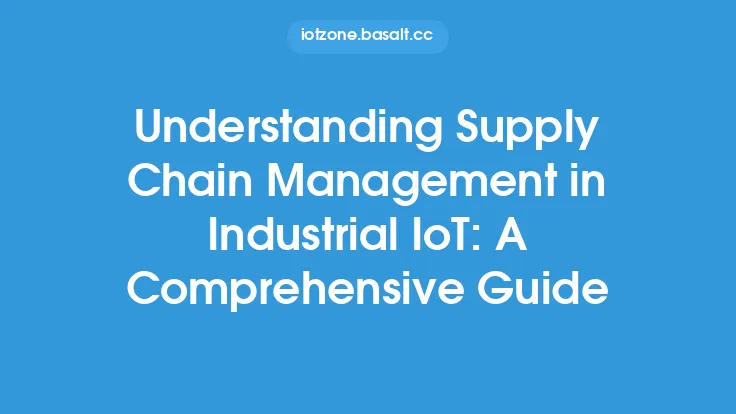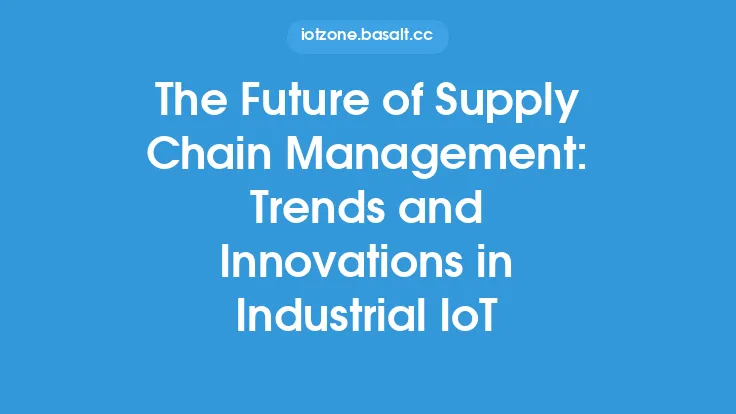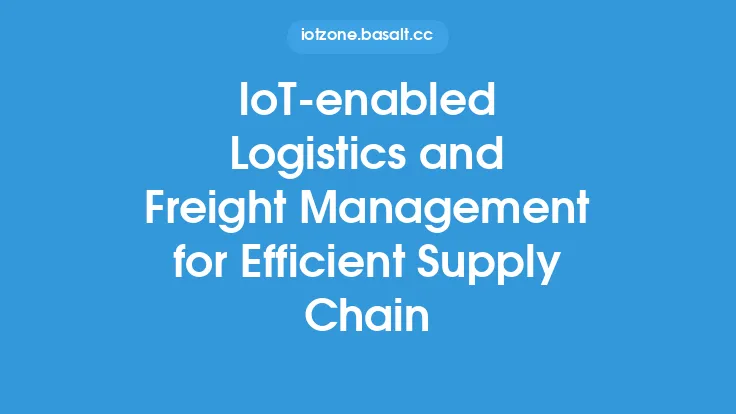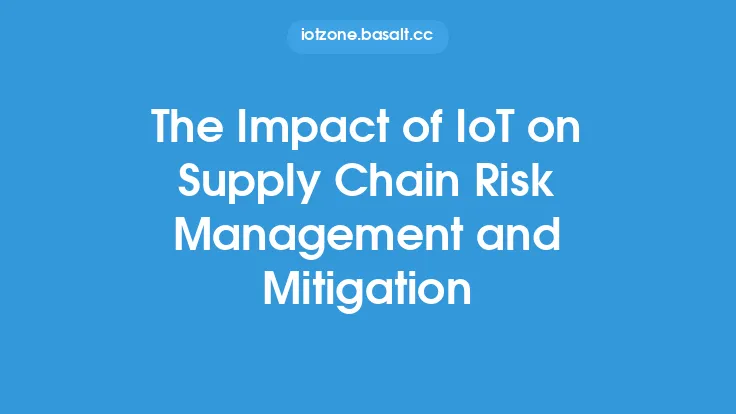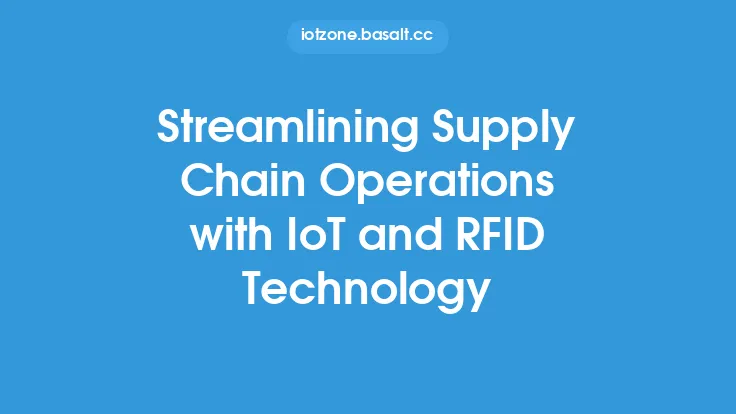The integration of the Internet of Things (IoT) in supply chain management has revolutionized the way businesses operate, making them more efficient, transparent, and responsive to changing market conditions. By leveraging IoT technologies, such as sensors, RFID tags, and GPS tracking, companies can gain real-time visibility into their supply chain operations, enabling them to make data-driven decisions and improve overall performance. In this article, we will delve into the benefits, challenges, and best practices of implementing IoT in supply chain management.
Benefits of IoT in Supply Chain Management
The benefits of IoT in supply chain management are numerous and well-documented. Some of the most significant advantages include improved supply chain visibility, increased efficiency, and enhanced customer satisfaction. With IoT, companies can track their shipments and inventory in real-time, enabling them to respond quickly to changes in demand or supply. This can lead to reduced lead times, lower inventory levels, and improved fill rates. Additionally, IoT can help companies to optimize their logistics and transportation operations, reducing fuel consumption, lowering emissions, and improving route planning.
IoT can also enable companies to improve their quality control processes, reducing the risk of counterfeit products and improving overall product quality. By tracking products throughout the supply chain, companies can identify potential quality issues early on, enabling them to take corrective action before products reach the end customer. Furthermore, IoT can help companies to improve their supply chain security, reducing the risk of theft, loss, or damage to products in transit.
Challenges of IoT in Supply Chain Management
While the benefits of IoT in supply chain management are significant, there are also several challenges that companies must overcome. One of the biggest challenges is the complexity of IoT systems, which can be difficult to integrate with existing supply chain systems and infrastructure. This can require significant investment in new technology and training, which can be a barrier for some companies.
Another challenge is the issue of data management and analytics. IoT systems can generate vast amounts of data, which can be difficult to analyze and interpret. Companies must have the necessary skills and resources to collect, analyze, and act on IoT data, which can be a challenge for some organizations. Additionally, IoT systems can be vulnerable to cyber threats, which can compromise the security and integrity of supply chain data.
Best Practices for Implementing IoT in Supply Chain Management
To overcome the challenges of IoT in supply chain management, companies must follow best practices for implementation. One of the most important best practices is to start small, focusing on a specific area of the supply chain where IoT can have the greatest impact. This can help companies to build expertise and confidence in IoT, before scaling up to larger implementations.
Another best practice is to develop a clear business case for IoT, which outlines the benefits, costs, and return on investment (ROI) for IoT initiatives. This can help companies to secure funding and resources for IoT projects, and to measure the success of IoT implementations. Companies should also develop a comprehensive IoT strategy, which aligns with overall business goals and objectives.
In terms of technology, companies should consider using IoT platforms and software that are specifically designed for supply chain management. These platforms can provide a range of tools and features, such as data analytics, device management, and security, which can help companies to get the most out of their IoT investments. Additionally, companies should consider using IoT devices and sensors that are ruggedized and designed for use in harsh environments, such as warehouses, distribution centers, and transportation vehicles.
Technical Requirements for IoT in Supply Chain Management
From a technical perspective, IoT in supply chain management requires a range of technologies and infrastructure. One of the most important technologies is wireless communication, such as Wi-Fi, Bluetooth, or cellular networks, which enable IoT devices to communicate with each other and with the cloud. Companies may also need to invest in IoT devices and sensors, such as RFID tags, GPS trackers, and environmental sensors, which can track products and monitor conditions throughout the supply chain.
In terms of data management and analytics, companies may need to invest in IoT platforms and software, such as device management platforms, data analytics platforms, and business intelligence tools. These platforms can provide a range of tools and features, such as data visualization, predictive analytics, and machine learning, which can help companies to extract insights and value from IoT data.
Additionally, companies may need to consider issues such as data security, scalability, and interoperability, which are critical to the success of IoT initiatives. This can involve investing in security technologies, such as encryption and access controls, and developing strategies for integrating IoT systems with existing supply chain systems and infrastructure.
Conclusion
In conclusion, IoT has the potential to transform supply chain management, enabling companies to improve efficiency, reduce costs, and enhance customer satisfaction. While there are challenges to implementing IoT in supply chain management, companies can overcome these challenges by following best practices, such as starting small, developing a clear business case, and investing in the right technologies and infrastructure. By leveraging IoT, companies can gain real-time visibility into their supply chain operations, enabling them to make data-driven decisions and improve overall performance. As the use of IoT in supply chain management continues to evolve, we can expect to see even more innovative applications and use cases, which will help companies to stay ahead of the competition and achieve their business goals.
